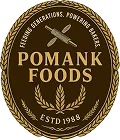Consumer preferences in Ghana’s bakery market are evolving rapidly, driven by global influences, health awareness, and changing lifestyles. Understanding these shifting preferences is essential for bakeries looking to remain competitive and capture emerging market opportunities.
The Hybridization of Taste Preferences
One of the most notable trends is the increasing popularity of hybrid products that combine traditional Ghanaian flavors with international baking techniques. This “glocalization” of bakery products is creating entirely new categories:
- Traditional Flavors, Modern Formats: Products incorporating local ingredients like tiger nuts, coconut, and tropical fruits into European-style pastries are seeing 25-30% year-over-year growth in urban markets.
- Fusion Breads: Artisanal bakeries incorporating local grains like millet and sorghum into sourdough and specialty bread are creating distinctive products with strong market appeal, particularly among middle and upper-income consumers.
- Global-Local Crossover: Pastries and cakes featuring global techniques with local flavor profiles (such as chin chin croissants or sobolo-flavored macarons) are becoming signature items for innovative bakeries.
This trend represents a significant opportunity for bakeries to differentiate themselves while appealing to consumers’ desire for both tradition and novelty.
The Health-Conscious Consumer
Health awareness is increasingly influencing bakery purchases across all demographic segments:
- Nutritional Enhancement: Products with added protein, fiber, vitamins, or minerals are growing at twice the rate of conventional alternatives. This is particularly evident in bread, the staple bakery product in Ghanaian diets.
- Reduced Sugar Options: 65% of urban consumers now express preference for less sweet baked goods, a significant shift from previous years. Bakeries offering reduced-sugar alternatives report 15-20% premium sales in this category.
- Clean Label Movement: Ingredient transparency is becoming a purchase factor for approximately 45% of consumers in higher income brackets. Products with shorter, recognizable ingredient lists are gaining market share.
- Whole Grain Adoption: Products featuring whole grains have seen 40% growth in the past 24 months, starting from a small base but accelerating rapidly, especially in school feeding programs and health-focused retail channels.
Convenience and Accessibility
Modern lifestyles are reshaping how consumers access and consume bakery products:
- Individual Portions: Single-serve bakery items have seen 35% growth, driven by on-the-go consumption and portion control preferences.
- Extended Shelf Life: Products with 3+ days of fresh quality (without preservatives) are increasingly preferred by urban households shopping less frequently.
- Digital Ordering: 55% of urban consumers now order bakery products via WhatsApp or other digital platforms at least once monthly, representing a fundamental shift in purchase patterns.
- Delivery Integration: Bakeries offering home or office delivery (either directly or through aggregator apps) report 25-40% incremental revenue from these channels.
Premium Experience Seekers
A growing segment of consumers are prioritizing experience and indulgence:
- Instagrammable Products: Visually distinctive items designed to be shared on social media are creating new marketing opportunities, particularly for celebration cakes and specialty items.
- Artisanal Appreciation: Hand-crafted, small-batch products command premium prices among 30% of urban consumers who value craftsmanship and uniqueness.
- Origin Stories: Products with clear provenance or maker narratives create emotional connections with consumers. Bakeries highlighting their history and processes report stronger customer loyalty.
- Occasion-Based Indulgence: While everyday consumption may focus on health, special occasion purchases are increasingly elaborate and indulgent, creating opportunities for bakeries to develop premium celebration offerings.
Regional Variations
It’s important to note significant regional differences in these trends:
- Accra/Tema: Leading in health-focused and premium international products
- Kumasi: Strong preference for fusion products blending tradition and innovation
- Takoradi: Growing demand for convenience formats and digital ordering
- Northern Regions: Emerging interest in enhanced nutrition and whole grains
Strategic Implications for Bakeries
These evolving preferences suggest several strategic priorities for forward-thinking bakeries:
- Product Development: Invest in creating signature items that reflect emerging preferences while maintaining traditional favorites.
- Staff Training: Ensure team members understand ingredient benefits and can communicate effectively with increasingly knowledgeable consumers.
- Digital Engagement: Develop strong digital ordering capabilities and social media presence to reach changing consumer touch points.
- Ingredient Sourcing: Partner with suppliers who can provide both quality and innovation to support product development.
- Market Segmentation: Recognize that different consumer segments have distinct preferences and develop targeted offerings accordingly.
By understanding and responding to these evolving preferences, Ghana’s bakeries can position themselves for sustained growth and profitability in a dynamic market environment.


